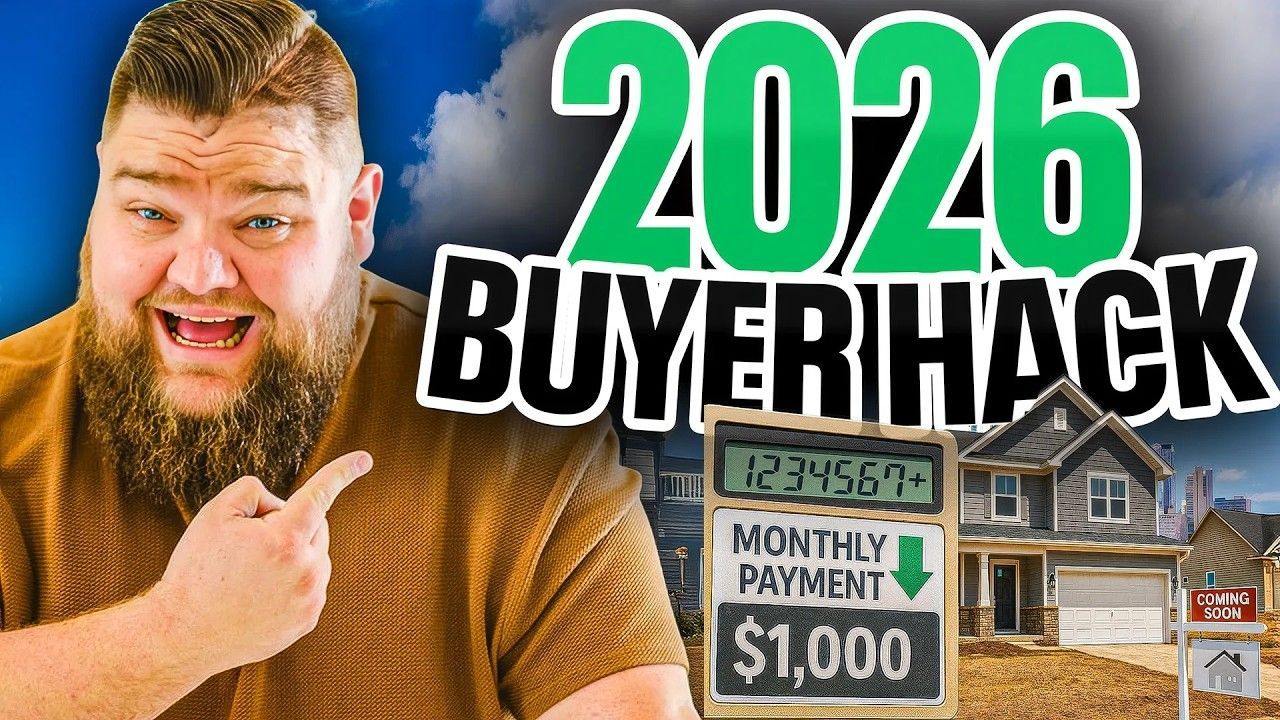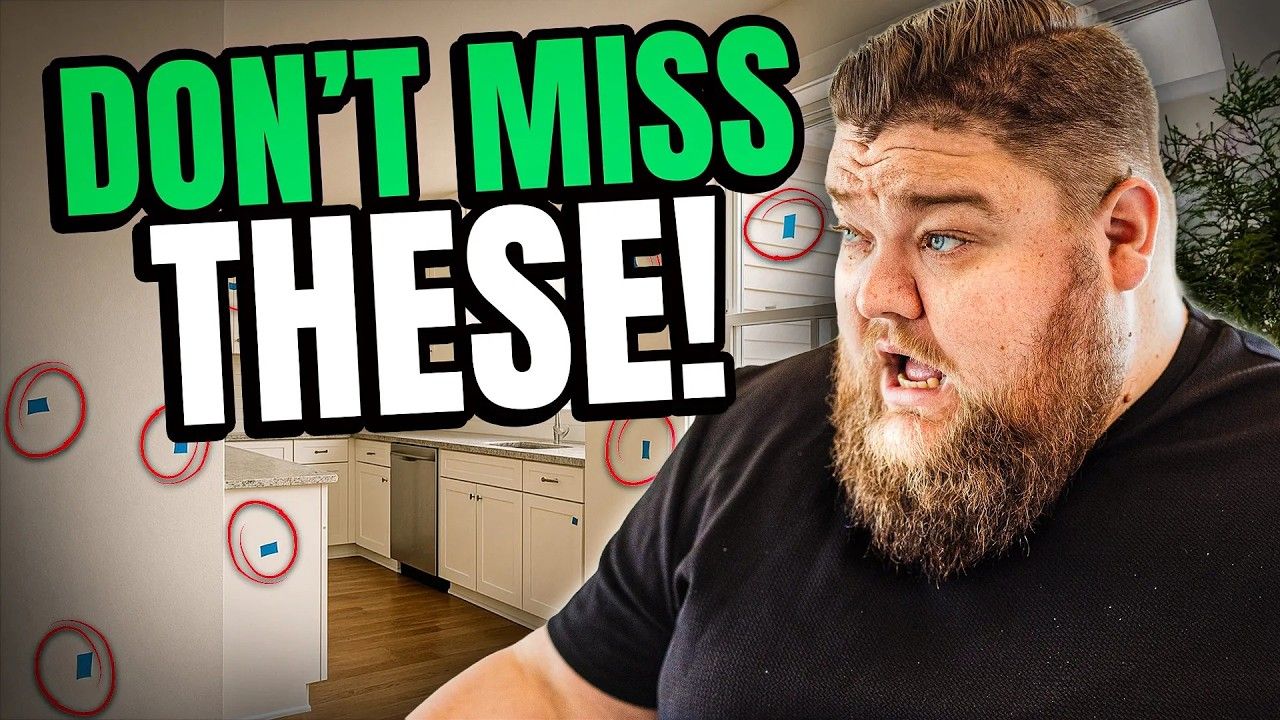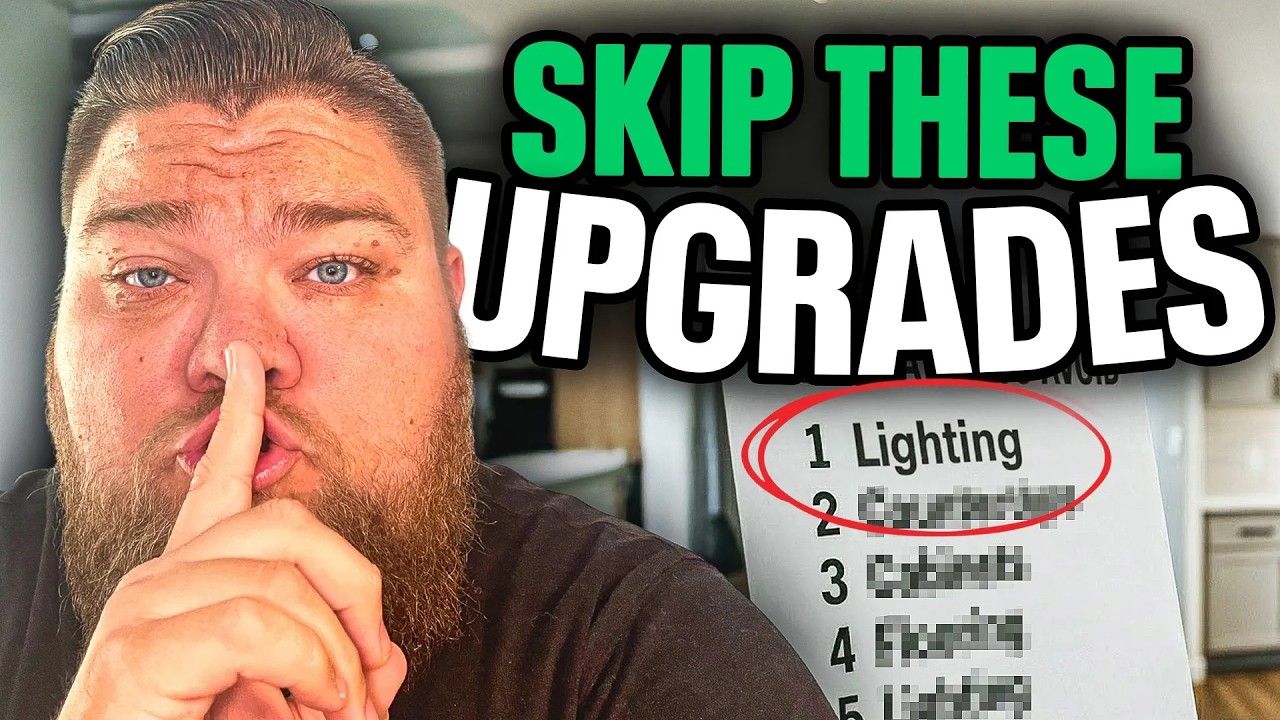DFW New Home Secrets: What Builders Don’t Want You to Know
If you’re searching for facts about buying new construction homes, you’re in the right place. I’m Zak Schmidt, and I’ve sold dozens of new construction houses each year across DFW. In this guide I’m going to share the real, practical facts about buying new construction homes—the things builders won’t tell you up front but that will save you time, money, and stress.
Table of Contents
- Why These Tips in Buying New Construction Homes Matter
- Secret #1 — Builder Incentives Have a Shelf Life
- Secret #2 — the Spec Game vs. The to-be-built Game
- Secret #3 — the Sales Rep Often Doesn’t Control the Deal
- Secret #4 — Standard Features Change Like Gas Prices
- Secret #5 — Lot Premiums: Negotiate, but Beware Appraisal Limits
- Secret #6 — Rate Buydowns Usually Beat Price Cuts
- Secret #7 — Timing: Builders Play the Long Game, You Can Play the Short Game
- The Psychology Difference: Resale vs. Builder Negotiation
- Practical Checklist Before You Sign
- Common Scenarios and How I Handle Them
- FAQs About Tips in Buying New Construction Homes
- Final Thoughts — How I Can Help You Apply These Tips in Buying New Construction Homes
- Contact & Resources
Why these facts about buying new construction homes matter
Most people assume buying new construction is as simple as pointing to a model, signing a contract, and moving in. That’s one way to do it—and sometimes it works— but there are pitfalls and opportunities people miss daily. These facts about buying new construction homes are the difference between overpaying or not getting the options you want and walking away with a home that fits your budget and lifestyle.
VIEW NEW CONSTRUCTION HOMES IN DFW
Secret #1 — Builder incentives have a shelf life
One of the most important facts about buying new construction homes is understanding that builder incentives are not permanent. When you see a headline like "rate buydown to 4.99%" or "$20k in design incentives," that offer frequently has a shelf life. The incentive can appear or disappear overnight depending on traffic, inventory, and what the builder’s management decides.
Here’s how it works: builders often buy forward commitment funds to offer rate buydowns or lender credits. That money is finite. Each contract that uses the incentive reduces the available pool. If a builder has committed $5 million to a 4.99% program, and a lot of buyers sign up quickly, that $5 million gets used up—and the offering vanishes.
Practical takeaways:
- If a sales rep says, "We only have $X left in the program," don’t assume they’re being pushy—often they’re just being factual.
- If you need contingencies (like selling your current home), know that incentives tied to closing dates can be lost if your timeline slips.
- Compare incentives across the builder’s different neighborhoods and regions—sometimes money is moved around to hit sales goals.
Negotiation script for incentive urgency
"I appreciate you letting me know how much is left in the fund. Can we secure the incentive in writing for X days while I finalize my sale contingency?"
Secret #2 — The spec game vs. the to-be-built game
Another core tip in buying new construction homes is choosing the right game: inventory/spec homes or to-be-built homes. They behave differently because the economics behind them are different.
Spec or inventory homes are completed or near-complete. The builder is carrying the carrying costs—taxes, loans, and interest—on these homes, so they often have more incentive to move them quickly. That means sharper discounts or creative incentives sometimes.
To-be-built homes give buyers choices: floorplans, selections, and often better customization. But builders have more breathing room because they’ve already planned for the timeline and factored in costs. Incentives on long lead times are often lump-sum credits (toward rate buydowns or closing costs) rather than long-term rate locks.
How to play each game:
- Spec/inventory: Leverage urgency. Ask for price reductions, closing cost assistance, or rate buydowns. Expect limited selection, but sometimes better short-term deals because the builder wants inventory moved.
- To-be-built: Run the math on upgrades, lot premiums, and buydowns. You’ll get more selection but less flexibility on long-term rate guarantees.
Example calculation: Why a half-point matters
Many buyers think $20k off price beats a buydown. Often it doesn’t. A permanent rate buydown of 0.5% on a $400,000 loan can reduce monthly payments more than a $20,000 price cut when you do the mortgage math and factor in how long you’ll keep the house.
Secret #3 — The sales rep often doesn’t control the deal
Here’s a truth many buyers don’t realize: the on-site sales rep is a salesperson for the builder, but they frequently do not have final sign-off. They may have back-pocket money and authority up to a point, but ultimately offers often need managerial approval.
That can lead to frustrating situations where you negotiate and even sign paperwork, only for management to come back and say they can’t honor the agreed-upon terms. I’ve seen it happen—contracts signed, then rejected by higher-ups. This is why having an agent who knows the builder’s internal decision tree pays off.
What I recommend:
- Work with an agent who has repeated experience with that builder and neighborhood. They know which sales reps have authority and what gets sent to management.
- Be collaborative with the sales rep—don’t burn that relationship. You want them advocating to their manager for your deal, not giving reasons to avoid you.
- If the sales rep promises something, get it in writing and understand what needs management approval.
Script when management needs to approve
"We understand this needs manager approval. Can you please outline exactly what gets presented and the timeline so we can plan contingencies accordingly?"
Secret #4 — Standard features change like gas prices
One of the most frustrating facts about buying new construction homes is that "standard features" can shift unexpectedly. Builders are constantly tweaking standards to hit different price points and control margins. Things that were standard last month—8ft doors, baseboards, level-one LVP, technology packages—can become upgrades next month.
That leads to this odd reality: two buyers could close in the same neighborhood within weeks of each other and end up with different stock features and different pricing because builder standards changed.
How to protect yourself:
- Ask for a written list of standard features at the time you sign. Keep it documented.
- If you loved features from a recent sale, ask the sales rep to add them back as a concession—sometimes they can, sometimes they can’t.
- Decide which features matter most to you and don’t get blinded by price alone—$10k more in upgrades might be worth it if you avoid paying to remodel shortly after moving in.
Secret #5 — Lot premiums: negotiate, but beware appraisal limits
If you want a corner lot, no-back-yard neighbor, or cul-de-sac location, expect a lot premium. Builders will place premiums on desirable lots—sometimes to recover extra costs paid to a developer, sometimes simply because those lots are worth more in the market.
Key cautions:
- Lot premiums are negotiable. I’ve seen $15k premiums waved completely and $80k premiums negotiated down to $20k depending on timing and demand.
- Lot premiums don’t always add to appraised value. An appraiser may value comparable homes without the builder’s internal lot-assigned premium, which can affect loan-to-value and homeowner out-of-pocket money.
- If you pay a large premium, prepare for potential higher down payment or jumbo product needs—talk to your lender early.
Strategy:
- Ask for comparable sales and builder justification for the premium.
- Negotiate an appraisal contingency or set aside extra funds for a possible appraisal gap.
- Consider whether the lot premium buys you long-term value—or just short-term desire.
Secret #6 — Rate buydowns usually beat price cuts
One of my strongest recommendations and a core tip in buying new construction homes: ask for rate buydowns instead of a straight price reduction. In most scenarios, a permanent rate reduction provides more long-term value than shaving $10k–$20k off the price.
Why?
- Lower rate = lower monthly payment. That translates into immediate affordability and typically a better debt-service ratio for qualifying buyers.
- Equivalent dollars spent on rate buydowns compound over time by reducing interest paid over the life of the loan.
- Most buyers don’t keep the mortgage for 30 years—many refinance later. A rate buy down gives you immediate relief and potential equity faster.
How to ask for a permanent buydown
Always negotiate for a permanent buydown rather than a temporary 1-2-3 year buydown. If the builder is paying, ask: "Can you allocate these builder funds to a permanent buydown on the interest rate?" If they push back, evaluate the temporary buydown math vs. your timeline.
Secret #7 — Timing: builders play the long game, you can play the short game
Builders manage pipelines by quarter and sometimes by year. They forecast lots and starts months or years in advance, and when developers delay lots or projects shift, builders get inventory pressure. That’s when you see more aggressive pricing—end-of-quarter, end-of-year, or when a community is underperforming.
Tips to use timing to your advantage:
- Don’t shop in a vacuum—track the builder’s calendar and watch for end-of-quarter push periods.
- Understand the regional pipeline—if a builder expected lots from a development that didn’t deliver, they’ll redistribute inventory and may offer incentives elsewhere.
- Pair timing with your leverage—if you can close quickly or be flexible on lot selection, you can often capture better deals at the right time.
The psychology difference: resale vs. builder negotiation
Buying resale is emotion vs. emotion—the seller has memories and feelings attached to the home. Buying new construction is emotion vs. data—the builder negotiates with comps, margins, and pipeline data. Understanding that psychology allows you to craft offers that appeal to the metrics builders use to evaluate keep-or-kill decisions.
Use this to your advantage: present a clean, well-documented offer with clear financing that makes it easy for the sales rep to bring it to management. The easier it looks on paper, the higher your odds of a yes.
Practical checklist before you sign
- Get the incentive and standard features documented in writing.
- Confirm which incentives are subject to expiration and what triggers termination.
- Ask for the manager’s approval timeline if the rep indicates escalation.
- Run the numbers: price cut vs buydown using your expected holding period.
- Check appraisals for lot premium treatment; ask your lender about appraisal-gap options.
- Don’t forget upgrade costs—base price + lot + options = real purchase price.
- Decide your walk-away point in advance and don’t be emotionally hostage to one house.
Common scenarios and how I handle them
Below are some real-world scenarios I see all the time and the approach I recommend. These are practical applications of the facts about buying new construction homes.
Scenario: Attractive rate buydown but short expiry
Solution: Ask for the buydown funds to be written into the contract tied to the closing date. If your closing timeline depends on selling your home, negotiate a short extension or ask for a partial holdback to guarantee the buydown if you hit a later closing date.
Scenario: Builder wants a non-contingent quick close on inventory but you need to sell
Solution: Explore bridge financing, ask for a sales contingency with a firm deadline, or look for spec homes with extended closing windows. If management is firm, weigh the cost of losing incentives vs. paying bridge costs.
Scenario: You want a premium lot but appraiser may not support it
Solution: Prepare to pay the gap or negotiate the premium down. Demand recent comps showing similar lot premiums, or structure the contract so the builder shares appraisal risk.
FAQs About Tips in Buying New Construction Homes
Are incentives always negotiable?
Many incentives are negotiable, but it depends on timing, inventory, and the rep’s authority. If the community is slow or it’s end-of-quarter, you have more leverage. Always ask the rep what’s available and what requires management approval.
Should I always take a rate buydown over a price cut?
Not always, but often. Run the mortgage payment math based on your expected holding period. Permanent buydowns usually help more buyers than short-term rate credits.
Can I get old standard features restored?
Sometimes. It depends on builder policy and the sales rep’s clout. Ask politely and document it. The worst they can say is no—sometimes they’ll add them back to close the sale.
How do I avoid appraisal surprises with lot premiums?
Work with your lender and agent to gather comps that justify the premium and consider an appraisal contingency. Know your walk-away point and budget for a possible appraisal gap.
When is the best time to buy new construction?
Watch the builder’s calendar—end of quarter/season/year usually brings more aggressive offers. Also, if you find a community with lagging traffic, that’s often your window to negotiate.
Final thoughts — How I can help you apply these facts about buying new construction homes
Buying new construction is about more than the floor plan. It’s about understanding incentives, timing, builder psychology, and documentation. These facts about buying new construction homes are practical, battle-tested strategies I use every day for my clients in DFW.
If you want help walking through offers, comparing spec vs. to-be-built, running the buydown math, or negotiating lot premiums, I’d love to help. Reach out, and let’s make the numbers work for your family—get the home you want without the surprises.
Contact & resources
If you’re moving to DFW or already here and shopping for new construction, I’ve built tools and guides to help. Use the resources I offer and always work with an agent experienced in new construction—because experience converts these facts about buying new construction homes into real savings and better outcomes.

Zak Schmidt
From in-depth property tours and builder reviews to practical how-to guides and community insights, I make navigating the real estate process easy and enjoyable.













